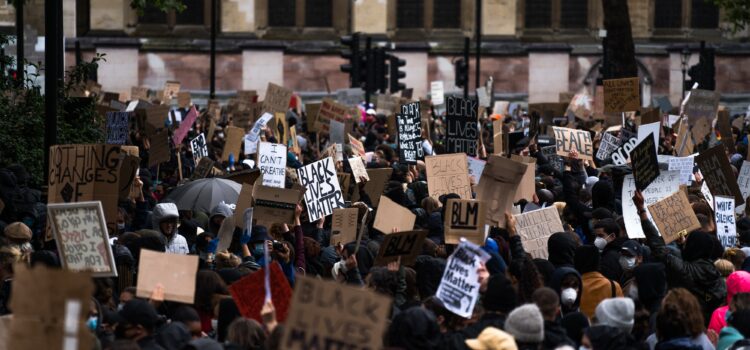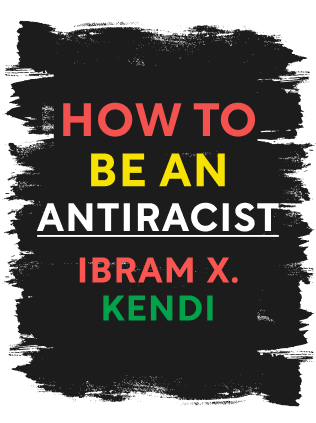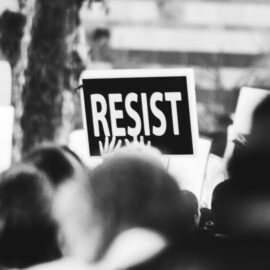

This article is an excerpt from the Shortform book guide to "How to Be an Antiracist" by tIbram X. Kendi. Shortform has the world's best summaries and analyses of books you should be reading.
Like this article? Sign up for a free trial here .
What is the difference between protest vs. demonstration? How can these two activities help address a racist policy?
Protest vs. demonstration comes down to the intention of your activity. While the two terms are used interchangeably, a protest is looking for change to a racist policy and a demonstration is trying to raise awareness.
Keep reading to better understand a protest vs. a demonstration, as well as other related terms.
Protest vs. Demonstration
Demonstrations and protests are another technique for fighting racism. Though the terms are often used interchangeably, they don’t mean the same thing. Here’s the breakdown of a protest vs. demonstration.
A protest has the end goal of getting a racist policy changed. Protests involve organizing people and take place over a long period of time.
The best protests create situations where changing policy is in racist powers’ best interests. For example, if teachers are on strike and racist power needs them to resume work, racist power might give the teachers raises. It’s hard to create situations like this, of course, because racist power tries to make the most threatening protests illegal.
A demonstration aims to raise awareness about a problem. Demonstrations involve mobilizing people in a particular place for a short period of time. Demonstrations aren’t as effective as protests because they only force change when power can’t deal with bad press, such as near election time. Most of the time, demonstrations don’t do anything except annoy racist power.
The best demonstrations help people become antiracist and emotionally support protests. For example, while Black women were boycotting buses in Montgomery, Alabama, they were supported by nighttime rallies.
If you’re wondering about protest vs. demonstration and what’s right for you, use these definitions and examples to help.
Ibram’s Experiences With Activism
Ibram X. Kendi had personal experience in understanding protest vs. demonstration. In 2007, Black students stood under the “White tree” in Jena, Louisiana. The next day, White students had hung nooses in the tree. This sparked racist violence that eventually led to six Black students, the “Jena 6,” beating up a White student. One of the students was charged as a juvenile and the others were charged with attempted murder. The district attorney wanted to send them to prison for 100 years.
In response to this, Ibram came up with a plan to free the Jena 6 that he presented at a Black Student Union meeting. He called it the 106 Campaign, and it involved two phases. The first was to recruit 106 students on 106 campuses to rally and fundraise for a legal defense fund. The second phase was to organize all these students into a car caravan that would disrupt traffic in Washington, D.C. and force the president to work on the Louisiana governor, who would work on the local Jena government.
One woman asked if the car caravans were illegal, and others were scared of being towed or of police response. Ibram ignored their fears and kept outlining the plan. He said that they could go to prison, but they should be fine with that because their cause was important.
Ibram thought he was being radical, but what he was really doing was scaring people off. The Black Student Union officers voted down his plan. At the time, he thought they were ignorant—he was committed to educational suasion and thought the other students were the problem, not him. He later realized that although his ideas sounded radical, they weren’t. True radicalism changes the way people think and prompts real change in the world, neither of which he was doing.
The new, less risky plan was to demonstrate on campus and to fundraise for legal defense. The demonstrations didn’t have a large effect—the very next day after the demonstrations, the judge denied one of the six bail. This was hard on the demonstrators—if nothing causes change, what’s the point? But that’s one of the things about a protest vs. demonstration, the goal isn’t to change the policy. However, the fundraising was effective—the new defense attorneys managed to get all of the six pleading guilty to simple battery, and no one went to jail.
Identification of the Problem
To work towards ending racism, you have to treat the cause, not the symptoms. Many people think that racism is caused by ignorance and hate, but as we’ve learned in previous chapters, in fact, it’s actually caused by self-interest and policy. The ignorance and hate come later.
Therefore, any attempt to end racism that starts by addressing ignorance and hate instead of the root cause is never going to be successful. For example, mentoring programs might help individuals, but no behavioral program will have an effect on policy.
While racist power is very flexible—it will use whatever strategy is most effective—historically, antiracists have tried the same strategies over and over again, even though they’ve never worked and will never work because they focus in the wrong place.
According to Ibram, activism seeks power and creates policy change. Changing minds and critiquing doesn’t count as activism. So, in considering a protest vs. a demonstration, the protest is the stronger activism.

———End of Preview———
Like what you just read? Read the rest of the world's best book summary and analysis of Ibram X. Kendi's "How to Be an Antiracist" at Shortform .
Here's what you'll find in our full How to Be an Antiracist summary :
- What racism is and how it evolved
- How you might have subtle racist thoughts and not even be aware of them
- Why being "not racist" isn't good enough







I disagree with your definitions of protests and demonstration. Protests means to stand against or to reject while a demonstration doesn’t necessarily mean a protests or to make aware but in support of something. This is better understood if it was called a rally, as into rally for support. Though they’re both demonstrations, the motives and goals can be different.